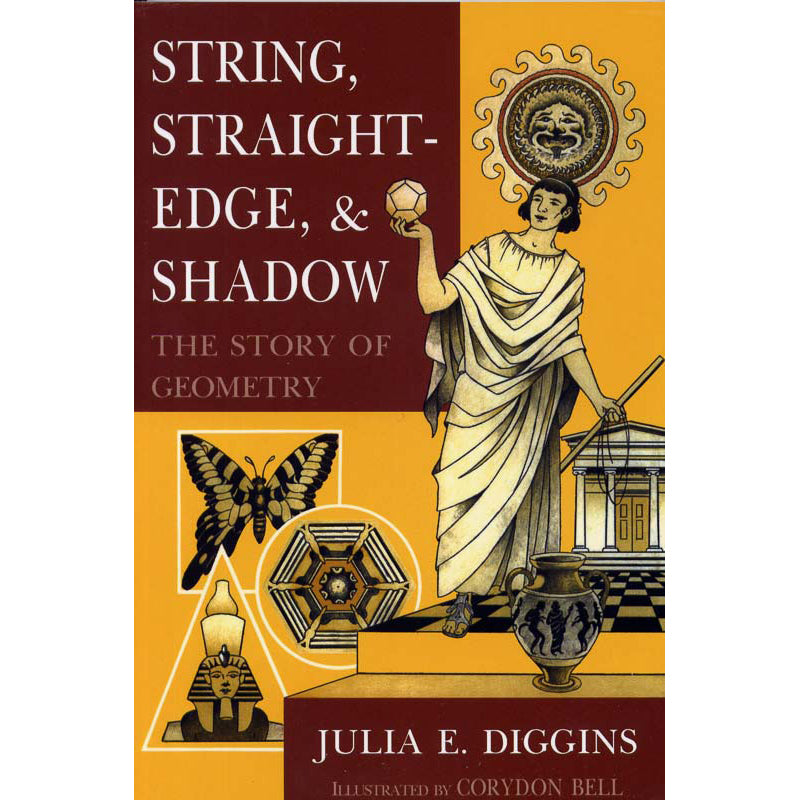
String, Straight Edge, and Shadow: the Story of Geometry
- Low stock - 1 item left
- Ships within 72 hours
by Julia E. Diggins; illustrated by Corydon Bell
This delightfully illustrated, classic 6th Grade reader recreates the atmosphere of ancient times when men, using three simple tools — the string, the straightedge, and the shadow, discovered the basic principles and constructions of elementary geometry more than two thousand years ago.
View sample pages from this book in PDF Format.
6″ x 9″, 155 pages, softcover.
This engrossing book reveals these first discoveries about elementary geometry related to the early civilizations of Mesopotamia, Egypt, and Greece. The fabric of the story is woven out of archeological and historical records and legends about the major men of mathematics. By reconstructing the events as they might have happened, the author enables an attentive reader to easily follow the pattern of reasoning that leads to an ingenious proof of the Pythagorean theorem, an appreciation of the significance of the Golden Mean in art and architecture, and the construction of the five regular solids.
Whether you are learning geometry for the first time, teaching it to your students, or parents helping your children through their first geometry course, this is a must read for everyone! You will be fascinated with the graphic illustrations and written description of how the knowledge and wisdom of so many cultures helped shape our civilization today.
Julia E. Diggins, the author of String, Straightedge, and Shadow, taught mathematics for many years in Washington, DC and completed her undergraduate work in mathematics at Trinity College in Washington. She then attended the Catholic University of America where she received an MA in psychology. While teaching mathematics in junior high school, she was awarded grants by the National Science Foundation to attend courses at Rutgers University, Boston College, and the University of Maryland where she worked with members of the Maryland University Mathematics Project on the preparation of a new curriculum. Subsequently, she began to devote herself entirely to teaching “modern” mathematics for elementary school teachers at the University of Maryland. Julia Diggins died in 1987.
A Customer’s Review: Text and Illustrations bring ancient geometry alive!
I’ve been reading several books on the history of mathematics lately. This one is the best! It makes concepts so clear by the marriage of text and illustrations. For example, I’ve read about Thales solving how high the Great Pyramid of Cheops was in two other books. This book used four diagrams and several pages of text to clearly explain how Thales answered his own question. Author Julia Diggins goes into depth on geometry but on a level children can understand.
Proceed slowly, letting your children try to solve a problem before reading about its solution. For example, pose the problem of drawing a perfect circle using a string. Once they have solved the problem or given up, read that part of the book. Then go to the beach or a park and use a volleyball pole and a rope to draw circles in the sand with your feet.
Then set them to figuring out how to divide a circle into six equal parts using the string. After they solve or give up, read that part of “String, Straightedge, & Shadow.” Let them follow the instructions and illustrations in chapter six to reproduce the results.

